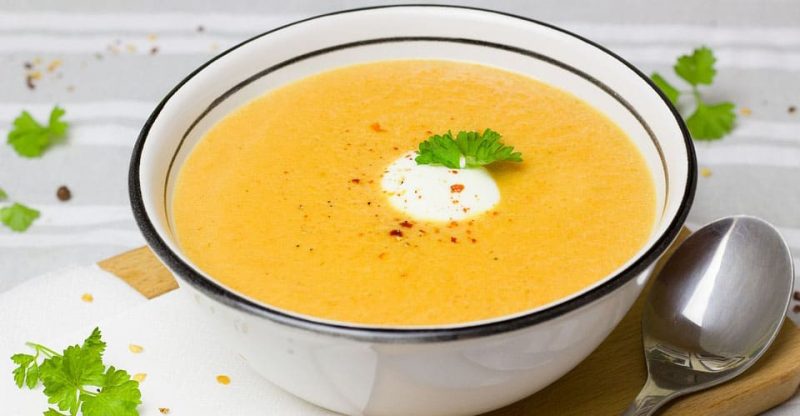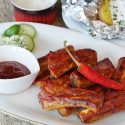What is Autolyzed Yeast Extract in Food: Uses, Composition, Gluten free, Vegan

What is it | Uses | Safety | Side effects | 15 FAQs
Yeast extract, or autolyzed yeast extract, has been in the market for around 50 years as a natural flavor enhancer for its special and unique taste. Yeast is a natural microorganism that has been used in our food for more than 4000 years.
You probably know it for making bread and beer, but what is the yeast extract? And what is it used for and how it is produced?
What is Yeast Extract?
Definition
It is generally made from brewers yeast or bakers yeast. Under certain conditions, the cell walls are broken by yeast autolysis or enzymatic methods, so proteins, nucleic acids and other nutritions in the yeast cells are fully released and degraded. Paste or powder products are concentrated or dried.
FDA gives the definition for bakers yeast extract: it is the food ingredient resulting from the concentration of the solubles of mechanically ruptured cells of a selected strain of yeast, Saccharomyces cerevisiae. It may be concentrated or dried. (1)
Let’s move to the navigation to know more of this ingredient:
What is Yeast Extract Used for?
Its primary purpose is as a flavor enhancer in soups, broths, bouillons, sauces and dressings, ready meals & snack food. Generally, it has 4 benefits that make it acceptable by the market and that’s why it is used in our food:
1. Taste
Providing a unique kokumi/umami taste along with taste masking effects.
2. Natural and Nutritional
It is a natural ingredient and contains a high degree of free amino acids and vitamin B series.
3. MSG replacement
People sensitive to MSG may have MSG complex syndrome. Yeast extract contains around 5% of MSG and it could be an alternative to people want to avoid MSG.
4. Sodium reduction
An ideal substitute for salt due to its full and complex savory taste. Some formulations with it can reduce sodium by up to 50%.
5. Vegetarians suitable
Its taste is quite similar to that of meat bouillon, but it without any meat ingredients. Therefore, it is appropriate for vegetarian dishes.
What is it Made From?
Brewers and Bakers Yeast
It is commonly manufactured from brewers yeast and bakers yeast. The latter is the most used one.
In European countries, manufacturers mostly use brewers yeast as the raw material for its rich in protein, simple culture conditions and the cost is low. Plus, it can significantly improve food flavor and make the product taste more pleasant.
However, it always has a bitter taste which is difficult to mask, so many manufacturers using brewers yeast removed bitter taste as raw materials for the production.
Yeast
Yeast extract is a processed form of yeast, which is the same yeast making beer and bread. Yeast has been used in food and beverage for almost 4,000 years and is regarded as safe.
Yeast is a very important microorganism in our diet, it produces alcohol in beer brewing and wine making. Meanwhile, carbon dioxide, the by-product of fermentation, is used in bread making and the production of carbonated beverages (2).
Also, it produces the flavors and aromas of soy-bean paste and soy sauce.
What is the Composition of Yeast Extract?
It consists of a combination of proteins, peptides, amino acids, nucleic acids, B vitamins, minerals, carbohydrates and others.
In details:
- Amino acids: it may have 19 kinds of amino acids, primarily glutamic acid, glycine, alanine and valine.
- Nucleic acids: it may contain disodium inosinate and disodium guanylate, both are also the flavour enhancer.
- B vitamins: it may be made of vitamin B1, B2, B6, B12, niacin, pantothenic acid, biotin and folic acid.
What is Autolyzed Yeast Extract and How is it Made?
There are two kinds of yeast extract, autolyzed and hydrolyzed. The definition depends on whether using outside enzymes or not.
That’s to say, if enzymes used in the production are present in the yeast cells, the end product is autolyzed. Otherwise, it is hydrolyzed.
In both, the cell wall is removed and the inner contents of the yeast cells are hydrolyzed and combined.
Let’s see the details.
Autolyzed Yeast Extract
Commercially, yeast extract is most produced using autolysis by breaking down proteins into taste-delivering parts through the yeast’s own digestive enzymes.
Manufacturing Process
Generally, there are 4 brief steps in the manufacturing process:
- Yeast fermentation.
- Autolysis: heating until cell wall rupture, then the cells’ own digestive enzymes break proteins down into small compounds, amino acids and peptides.
- Separation the insoluble cell walls.
- Spray drying the find product into a powder form.

Image Source
Technology Development
The autolysis method has a low cost and a high extraction rate. The enzymatic hydrolysis method (using external enzymes) has a higher cost but is suitable for manufacturing high quality products.
With consumers’ higher pursuit of health and nutrition, the methods have also been developed. Many technological innovations are improved, such as yeast cell wall breaking technology, membrane ultrafiltration technology, and flavored technology.
The flavored technology is to flavor yeast extract by Maillard reaction to produce a flavor of beef, chicken or other meat flavors.
That’s why you can see many food grade specifications in the market, such as rich in natural nucleotides, soy sauce flavor, beef flavor, chicken flavor and etc.
Specification
Appearance
Available in 3 forms in the market: liquid, powder and paste. It has the unique taste and smell of yeast. 5% aqueous solution has a pH value of 5-6. Powdered products have strong water absorption. Generally, paste products contain 20-30% water, powder contains 5-10% water.
Solubility
Soluble in water
CAS Number
8013-01-2, 68876-77-7 (from baker’s yeast)
Chemical Formula
NA
What are the Uses?
Food
Yeast extract is a nutritional substance extracted from yeast, known as one of the four major umami substances together with MSG, I+G and HVP.
It is both a umami flavor and a flavor enhancer. Therefore, the usage of above three additives can be reduced and adjusted after adding it in foods.
It is widely used in condiments, meat products and baked goods, and gradually the application expanded to products such as puffed food, aquatic products and nutritional health products.
Following foods may contain with it:
- Seasoning, such as instant noodle seasoning bag, gravies, soy sauce, vinegar
- Snack food
- Meat products, like sausages
- Fried or roasted food
- Canned vegetables
Cosmetics
Per the “European Commission database for information on cosmetic substances and ingredients”, hydrolyzed yeast extract functions as a skin conditioning while autolyzed form works as both skin conditioning and skin protection in cosmetic and personal care products. (3) (4)
Culture Media
Yeast extract is also used as a nutritional source in microbial growth media for its rich in nitrogen, amino acids, vitamins, nucleic acids, minerals and carbohydrates.
Is Yeast Extract Safe to Eat?
Yes, its safety when used as a food additive has been approved by the U.S. Food and Drug Administration (FDA), European Food Safety Authority (EFSA), Joint FAO/WHO Expert Committee on Food Additives (JECFA), as well as other authorities.
FDA
Safety & Uses
The FDA 21CFR184.1983 claimed bakers yeast extract is generally recognized as safe (GRAS) and can be used as a flavoring agent and adjuvant at a maximum level of 5% in food.
What are the Possible Health Risks?
It is common that sometimes consumers have questions whether yeast extract is bad for our health and what are the side effects. It is generally safe and almost without reported adverse effects except for the allergy.
Allergy
In 2017, a person was found allergic to beer and wine, and the symptoms including throat and facial itching accompanied by mild wheeze and severe urticaria.
It is the allergy to yeast and yeast extract that made this happen. (5)
Is it Safe for Pregnant?
Yes, it is generally safe, better consult with your doctor.
Frequently asked questions
Is it Natural?
Yes, it is natural as derived from the same yeast that is used for thousands of years in the production of bread, beer, and wine.
Is it Halal?
Yes, it is recognised as halal. And we can find several suppliers certificated with MUI halal.
Is it Kosher?
Yes, it is kosher pareve. It has met all the “kashruth” requirements and can be certified as kosher or maybe kosher passover.
Is it Gluten free?
Yes, it is gluten free according to FDA that it does not contain wheat, rye, barley, or crossbreeds of these grains.
Is it Vegan?
Yes, it is vegan. Raw materials and the manufacturing process without the use of animal-based products.
Yeast extract is often used in vegetarian products to give them the “umami” taste. It is usually packaged as a spread in products like Marmite in British and Vegemite in Australia.
Where does its Taste Come From?
The taste can be attributed to its content of amino acid, peptides, nucleotides, and other components.
Is it Same as MSG?
No, they’re totally different. It is often mistaken for monosodium glutamate (MSG). The latter is a pure additive while the former is a mixture.
However, yeast extract contains naturally occurring MSG but the content is very low.
Yeast Extract Vs MSG?
Safety
MSG is the most commonly used taste enhancer. But for decades, there have been many complaints against it for its side effects. Considering this fact, yeast extract is a natural alternative for it.
Taste
Unlike yeast extract, MSG does not have its own taste and only to make the existing flavour stronger.
How Much MSG in Yeast Extract?
It has a natural glutamate content about 5%.
How Much is it in Our Food?
Just a small amount (usually less than 1%) is enough to make the food have a good flavor taste for its own strong taste.
Is Yeast Extract the Same as Yeast?
No, they’re different.
- It is the ingredient extracted from yeast cells.
- It does not contain the cell wall and the inner components are degraded compared with yeast
Is Yeast Extract a Leavening Agent?
It is no longer used for the yeast traditional purpose (fermentation or as a leavening agent). It is commonly used as a flavour enhancer, providing savoury, meaty, umami and salty taste.
How to Avoid Yeast Extract?
It is usually labeled as “yeast extract” or “natural flavour” in the ingredient list. So just look for it in your food label if you want to be aware of it.
What is Its E number?
It doesn’t has E number as it is not a food additive.
What are the Substitutes for it?
MSG, HVP, I+G.
Conclusion
Now you may have a knowledge of the natural flavor enhancer – Yeast extract, from the following aspects:
- Two types: autolyzed & hydrolyzed Yeast extract, and their different manufacturing processes
- Uses and benefits in food
- Comparison with MSG
- Safety
- Common FAQs: is it natural, gluten free, vegan, substitutes, how much to use in food and so on.
What do you think of this ingredient? Let me know in the comments.


